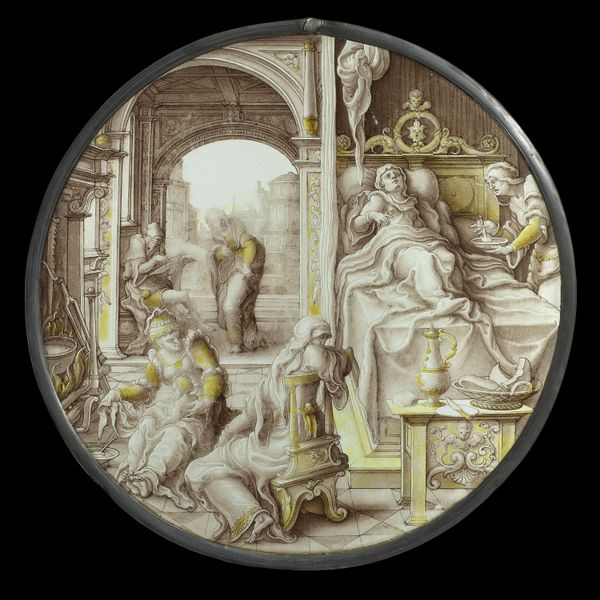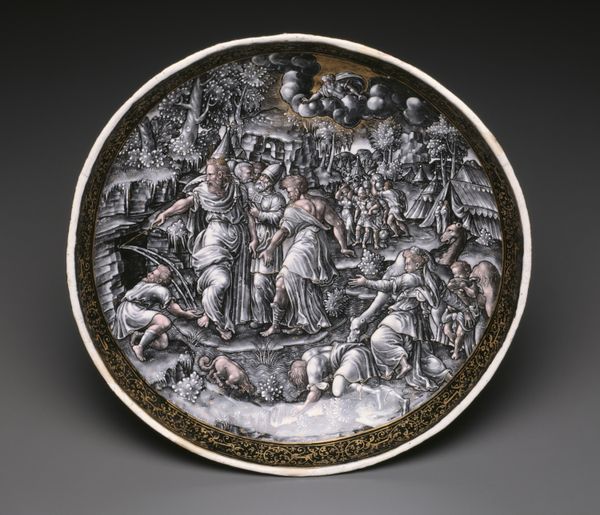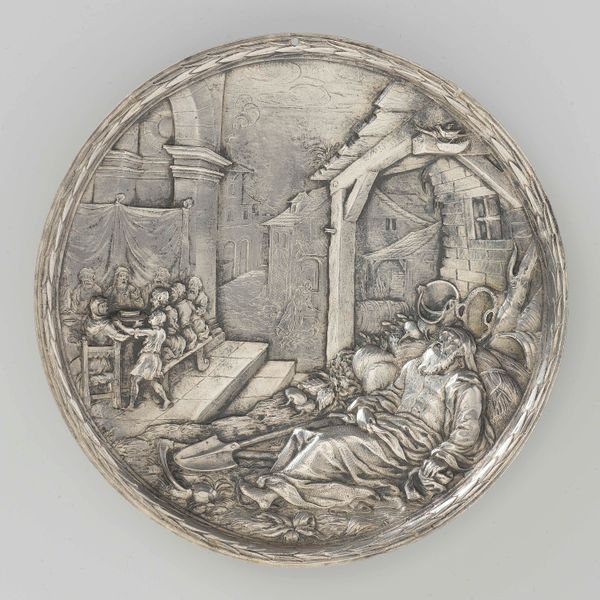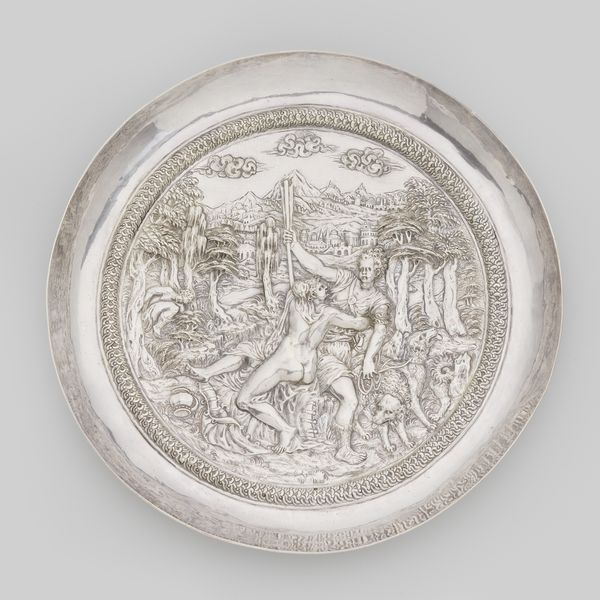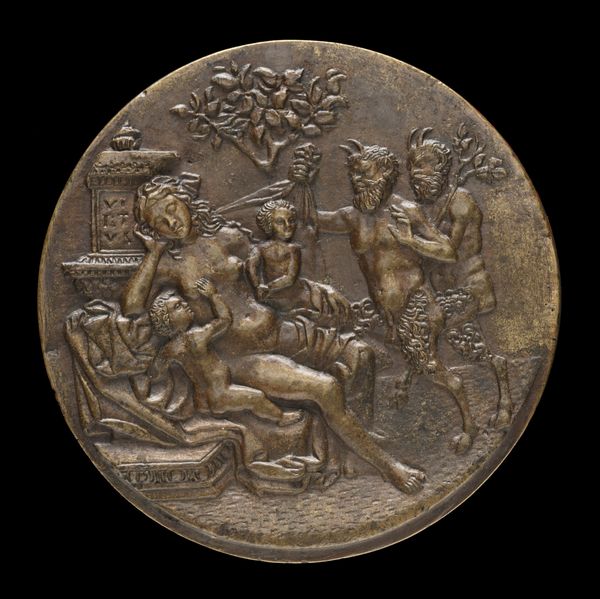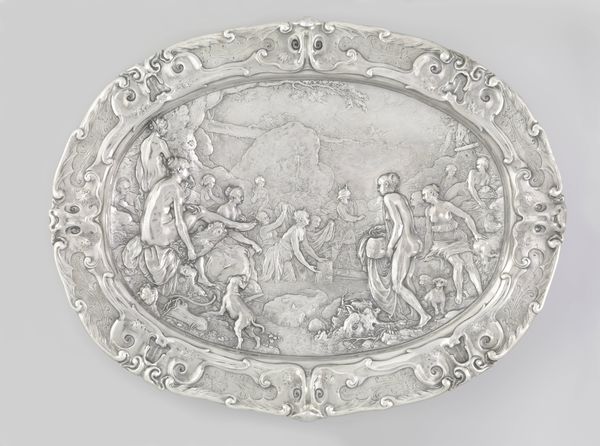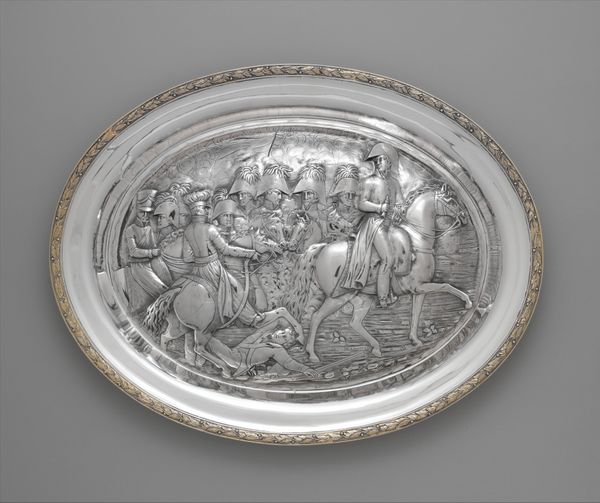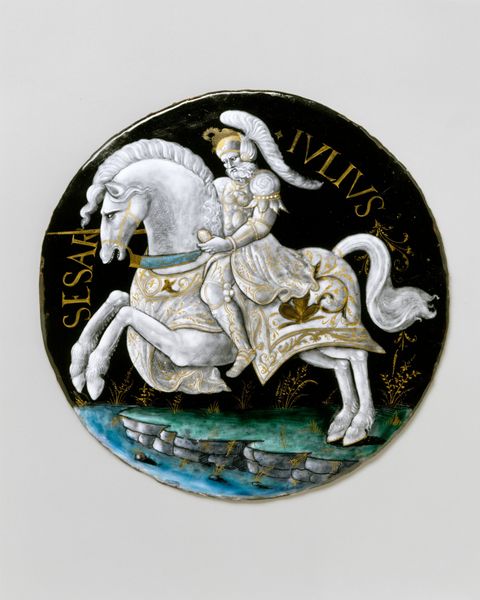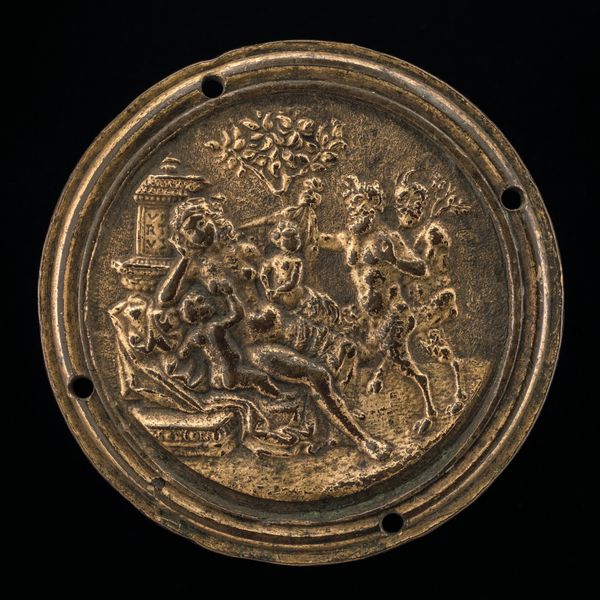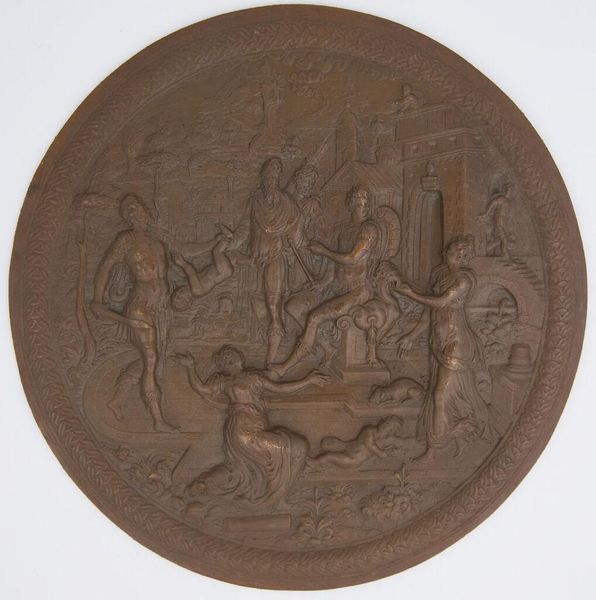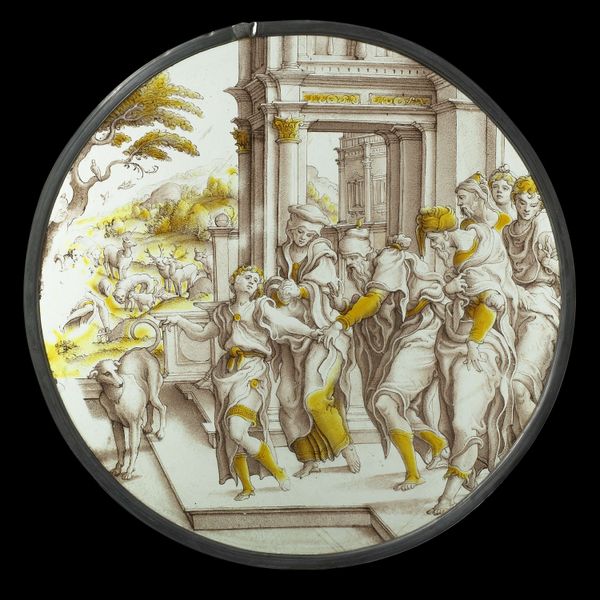
print, glass
# print
#
landscape
#
figuration
#
glass
#
northern-renaissance
Copyright: Rijks Museum: Open Domain
Editor: This beautiful roundel, "The Flight into Egypt" by Dirck Vellert, made of glass and dating to about 1532-1540, presents a classic biblical scene with a sense of gentle calm, despite the context of danger and escape. What strikes you about this particular representation? Curator: What I see is not simply a biblical narrative, but a reflection on the precarity of migrant families throughout history. Vellert, working in the Northern Renaissance, places this vulnerable family – refugees fleeing persecution – within a meticulously detailed, idealized landscape. Yet, look closely: how does the monumental architecture in the background juxtapose with the family's humble transport? What does it mean to stage a divine narrative against a backdrop of human power and inequality? Editor: That’s an interesting point about the architectural context. I was focusing on the family itself and how Mary is centered in the composition. Curator: Absolutely, the central placement of Mary and Jesus underscores the vulnerability and strength of motherhood, and connects it to broader discussions of the female body as both sacred and politically charged. The historical backdrop for this is also critical, remember this image was produced during Reformation. Considering these religious and social upheavals, how do you think Vellert used the Flight into Egypt as a way to perhaps offer commentary or perhaps solace? Editor: Perhaps, by focusing on a narrative of survival and hope in the face of adversity, it offers a sense of resilience and shared experience during turbulent times? Curator: Precisely. The painting becomes a statement. It’s an invitation to critically assess how power operates. And whose stories get told—and whose are silenced. What do you take away from it now? Editor: That there's so much more to it than just a pretty picture on glass, and that it encourages a deeper look into migration and power struggles, not just in the 16th century but even now. Thank you.
Comments
No comments
Be the first to comment and join the conversation on the ultimate creative platform.

